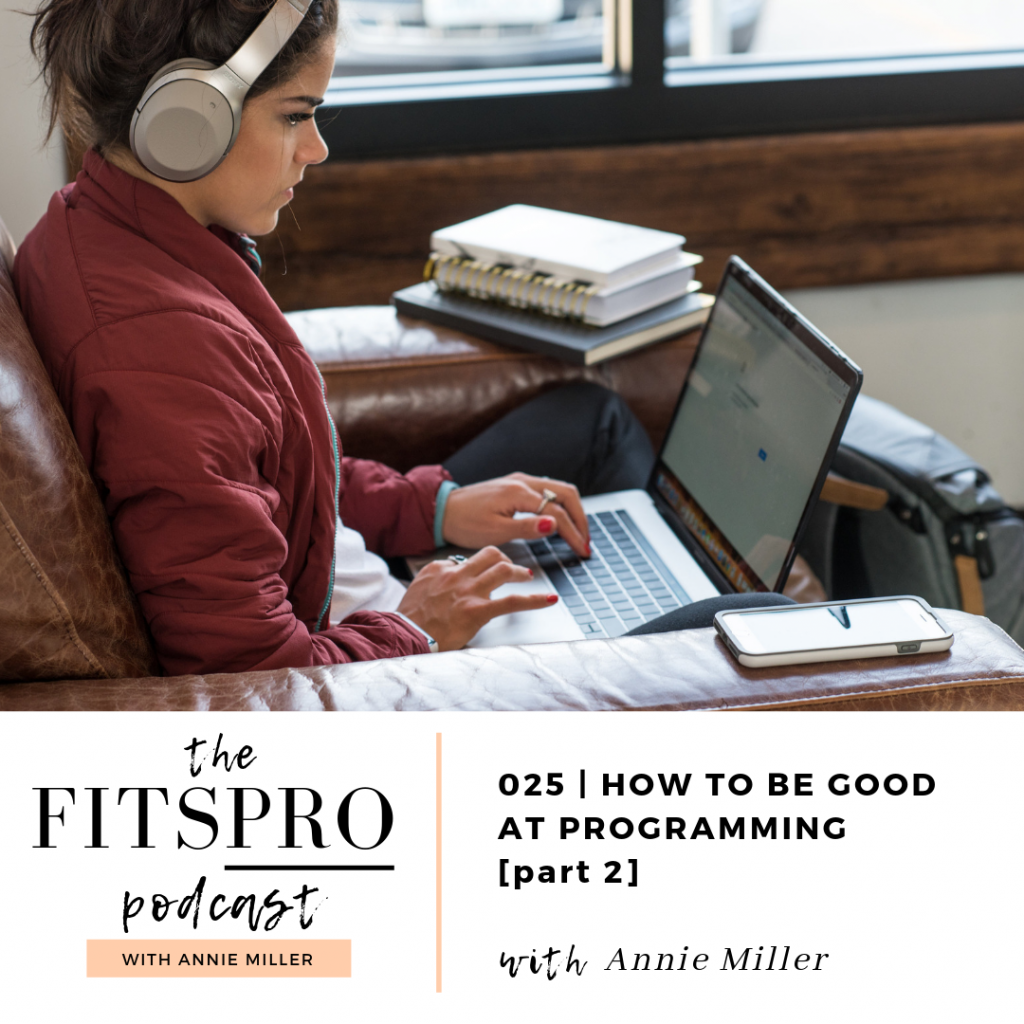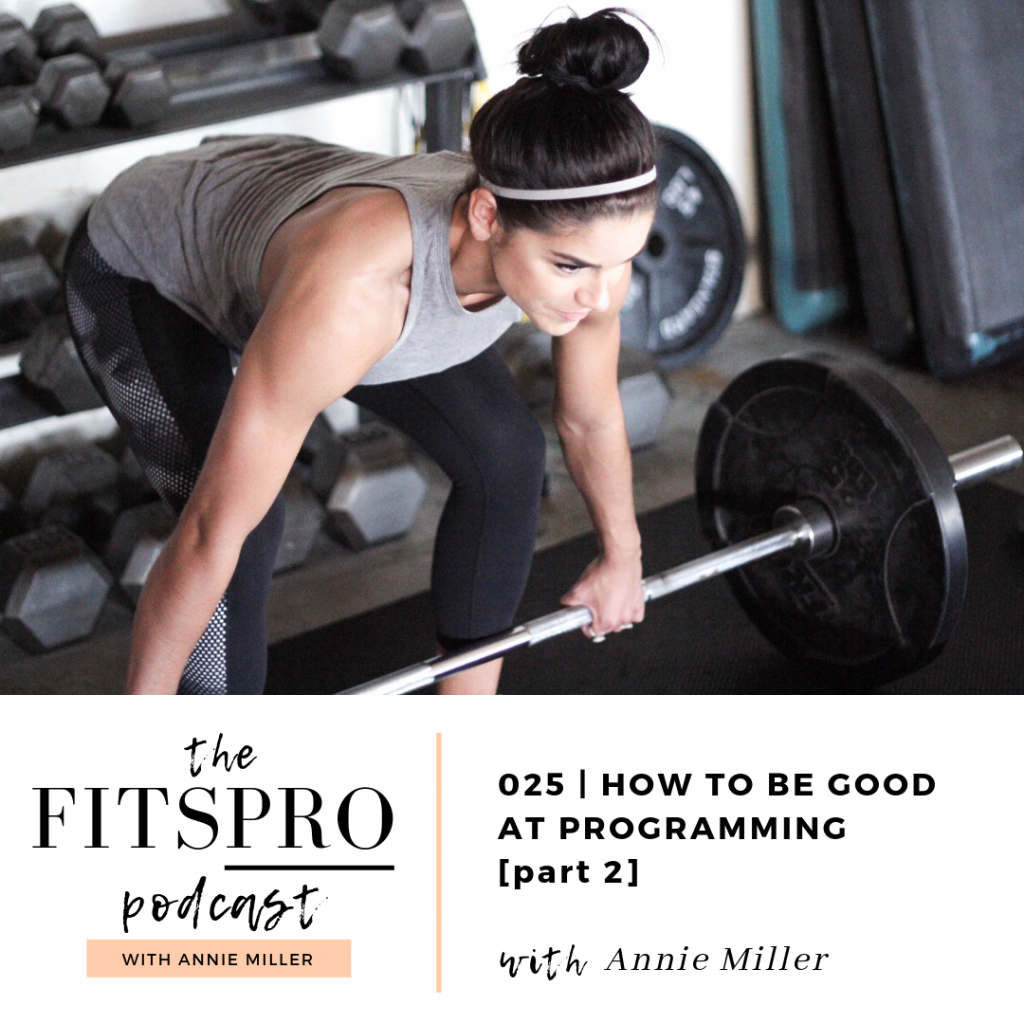the blog
welcome to
looking for something specific? find it here
Podcast: Play in new window | Download (46.6MB)
Subscribe: Google Podcasts | RSS

How to be good at programming part 2
I for one understand how hard and overwhelming it can be write programs.
So, for those of you who feel like you don’t know where to start or you can’t comprehend how easy it is for other trainers, remember that we all likely felt that same way.
We all had a “first” program. We all felt like there were 3 million exercises and 200,000 rep schemes and somehow we were supposed to know which five of the 3 million exercises would work and what rep schemes would get us where we wanted.
I just want you to know that while I consider myself an expert at writing programs, and LOVE doing it now, there was once a time when I stood in my professors office with a blank piece of paper and nothing but questions because I could not for the life of me start my program design.
I said to him, “I just want an equation, axb gives you c results.” One way for everything. And he said what he thought would be helpful but just solidified my point of struggle. He said that he could ask 25 of us to write a program to improve his back squat or vertical jump; and all 25 programs would be completely different, but they would get him the same result…
Yeah, NOT HELPFUL. It was supposed to be freeing to me, but it wasn’t. Like I said, it just confirmed to me that there were 3 million combinations. And I was stuck in choosing the RIGHT one. But fam, there isn’t a RIGHT one.
There is however some basics that can help ground you when starting out. And that’s what I’m sharing with you today.
We’ll jump into your program skeleton, exercise selection and some info on sets and reps. I hope to provide a framework in the very least, so you have something to focus on besides a blank slate and endless options.
To keep it simple this episode is for a strength training program, not crossfit where you’re focusing on specific energy systems on a day to day basis, or you should be anyway. This is for those of you who are looking to improve things like strength, hypertrophy, power and mobility. Maybe even correct imbalances and things like that. So if that’s you, If that’s your style of training, let’s do this.
First up, you have your programs skeleton right? These are your plug and chug components. Nearly every workout will have these.
We touch on each of the following inside the episode: warm up, movement prep, power lift, main lift, compound accessory, single joint accessory, cool down or whatever you need.
That’s your skeleton for now.
Then we have sets and reps + exercise selection right? So that’s what we’ll dive into next.
You need to understand movements in categories before we go plucking from the exercise tree.
You have:
Squats (knee dominant movements)
Hinges (hip dominant movements)
Vertical pushes
Vertical pulls
- strict press, push press, pull ups, lat pull downs, high pulls
Horizontal pushes
Horizontal pulls
- bench press, push ups, bent over rows, seated rows, inverted rows.
Carries (overhead, single arm, normal etc)
Antirotational core work
Rotational core work
And then within all those squat, hinge pushes and pulls we have single limb work right? But those are the basics and if you grasp that categorization and know how to tell what category and exercise falls into. You should have a better idea of how to focus a program while keeping it balanced.
That’s what I will leave you with here. We then go over set and rep schemes. For now, know that you need to consider the following when creating your program set and reps.
Weekly volume,
Goals of the program,
Training age of the athlete.
It’s a mistake for a trainer to look at a program workout by workout alone. You need to look at weekly volume, both in total stress to the body, and isolated stress to certain areas.
You need to keep an eye on weekly volume and time under tension for the whole body and isolated areas. Have the big picture in mind vs just making 5 individual workouts that aren’t cohesive.
Keep it simple my friends and use the SCIENCE of physiology, progressive overload and adaptation to create your programs.
And I’ll give you some of my personal favorite set and rep schemes in the episode so tune if you want those boo boo.
Okaaaayyyyyyy….programming can feel like a beast my friends. I hope helps, and doesn’t just confuse you more.
I honestly find it hard to break it down into digestible pieces, but I tried real hard for you.
If you’re new or you missed it, this is part two to how to be good at programming. The previous episode laid out the foundations for this one.
Also, episode 11 actually goes over the 5 basics of training and programming. And that’s what I believe the trainer and the trainee should have an understanding of. So check those out if you haven’t for sure.
If you find value here, on The FitsPRO Podcast, then pretty please head over to itunes, subscribe, rate and review the show. It means the world to me when you spread my message to more humans.
P.S. Save this value packed episode for later over on pinterest!
I'm an adventurous introvert from Vancouver, Washington who lives on sleep + "me time." I'm a lover of lifting weights, dinosaurs, real talk and traveling with my husband. I am here to help you move better, lift more, bust the myths of the fitness industry, and inspire you to love the process.
Hey you,
The name's Annie & you're reading my thoughts. Let's get acquainted.
the whole story >
looking for something specific? find it here
THE LINKS BELOW ARE AFFILIATE LINKS
SKIN CARE
Nutrition
brands I love
working against gravity
Fre skin care
favorites
blue light blockers
klassy network
code: fdba saves you 15% off
online TRAINERS
save $50
code: ANNIE saves you 20% off
You love my style, trust my reviews, and want more Annie Miller Concepts vibes in your life? Shop my favorite brands. You get awesome products and yours truly gets a little kick-back.


